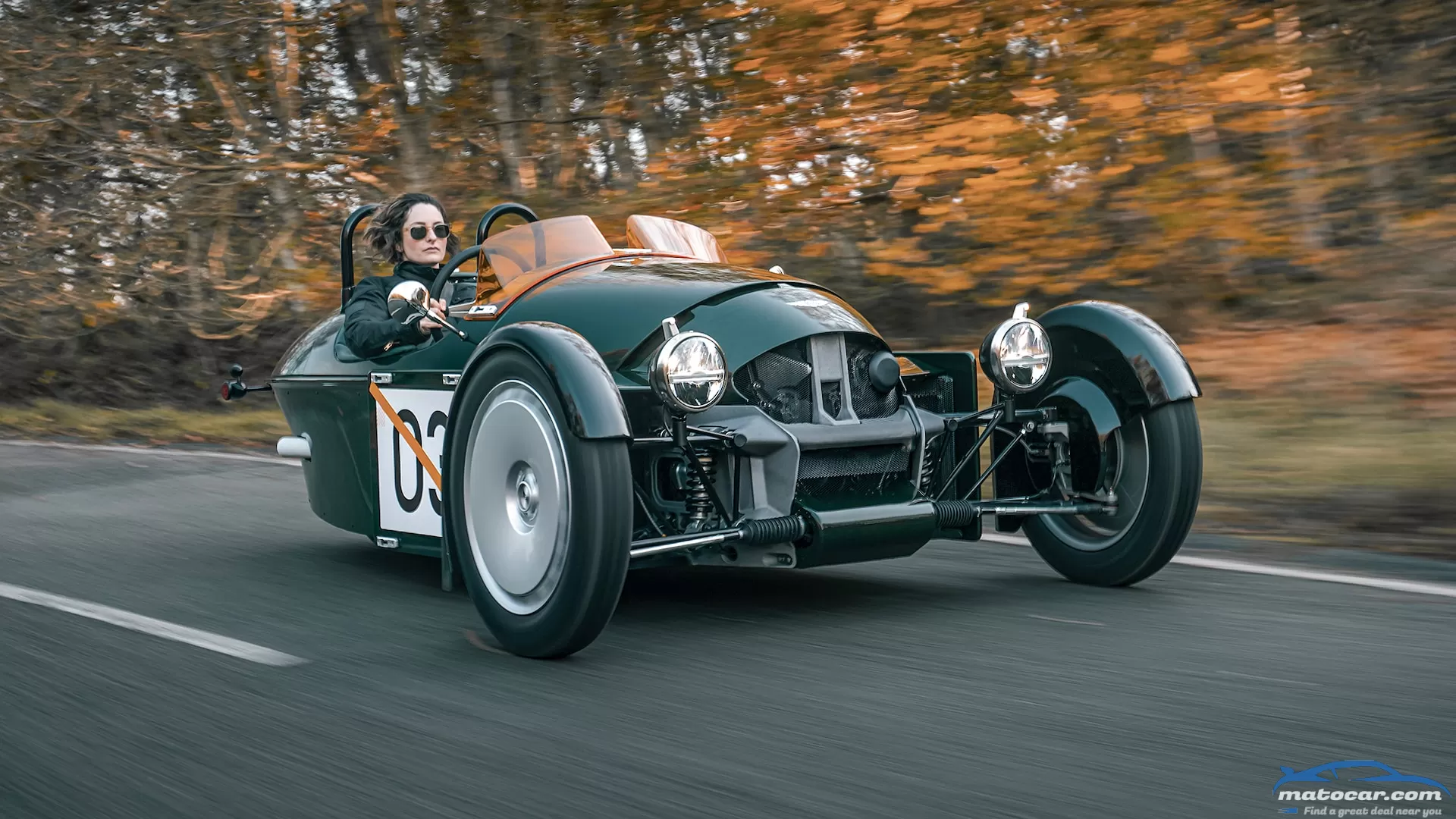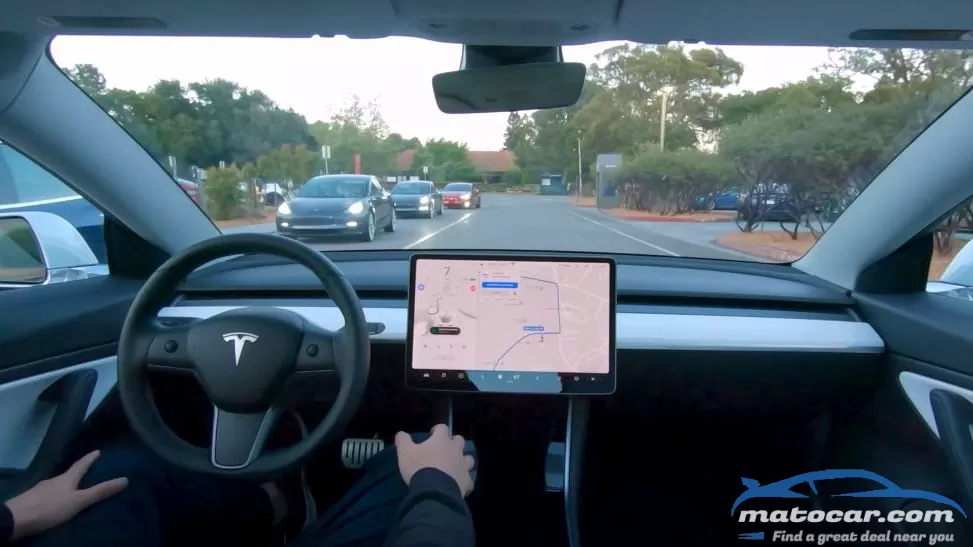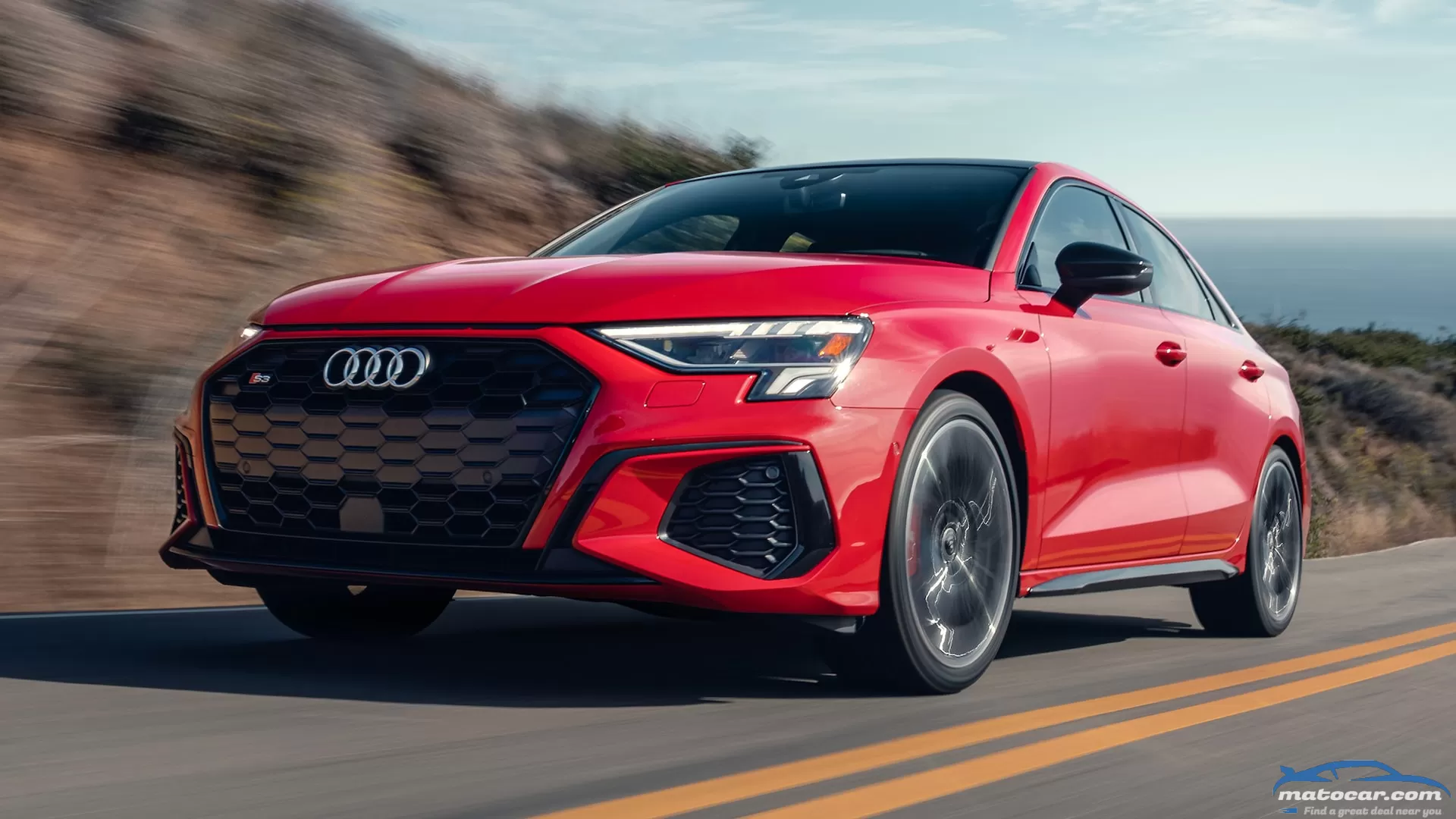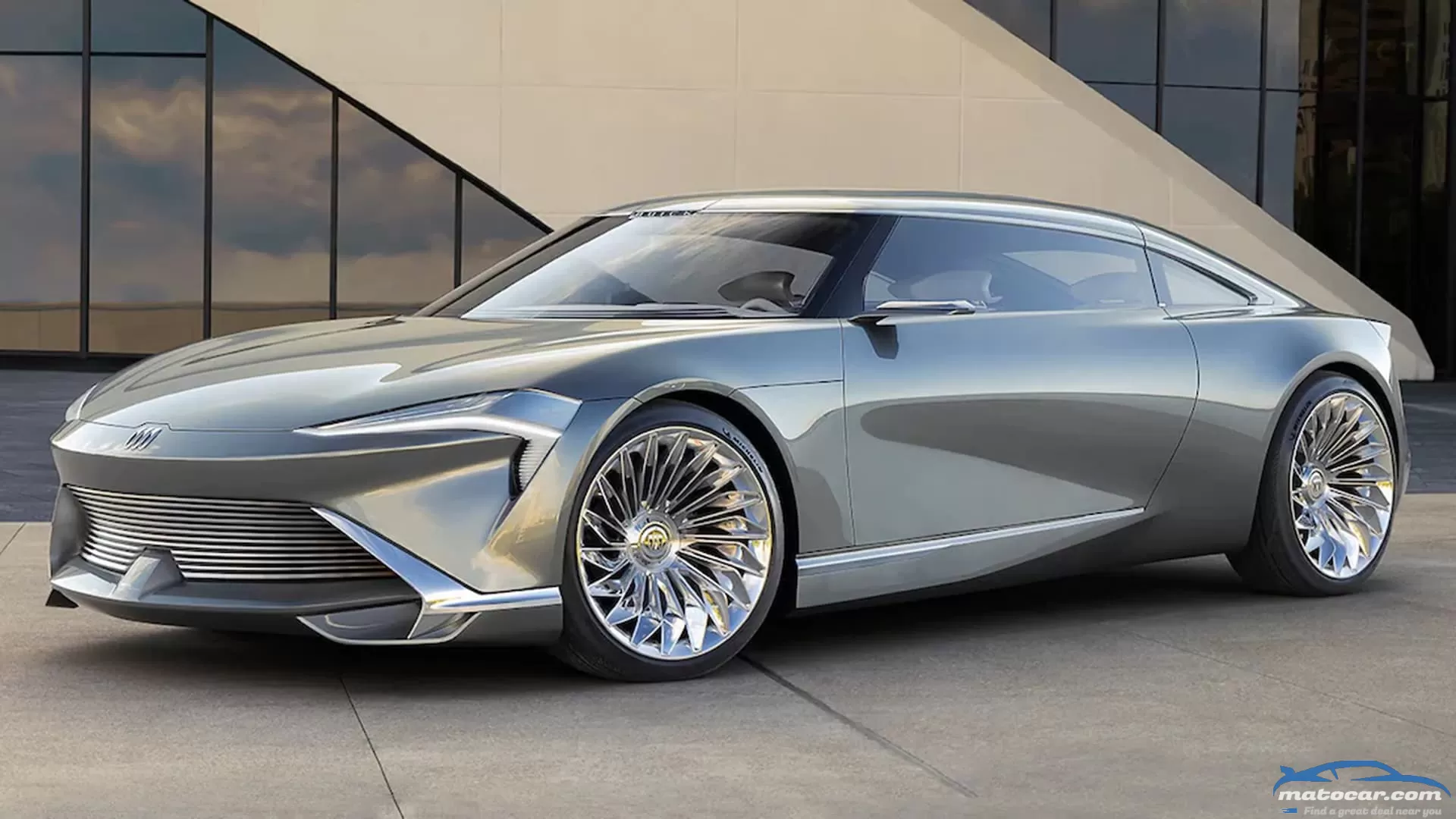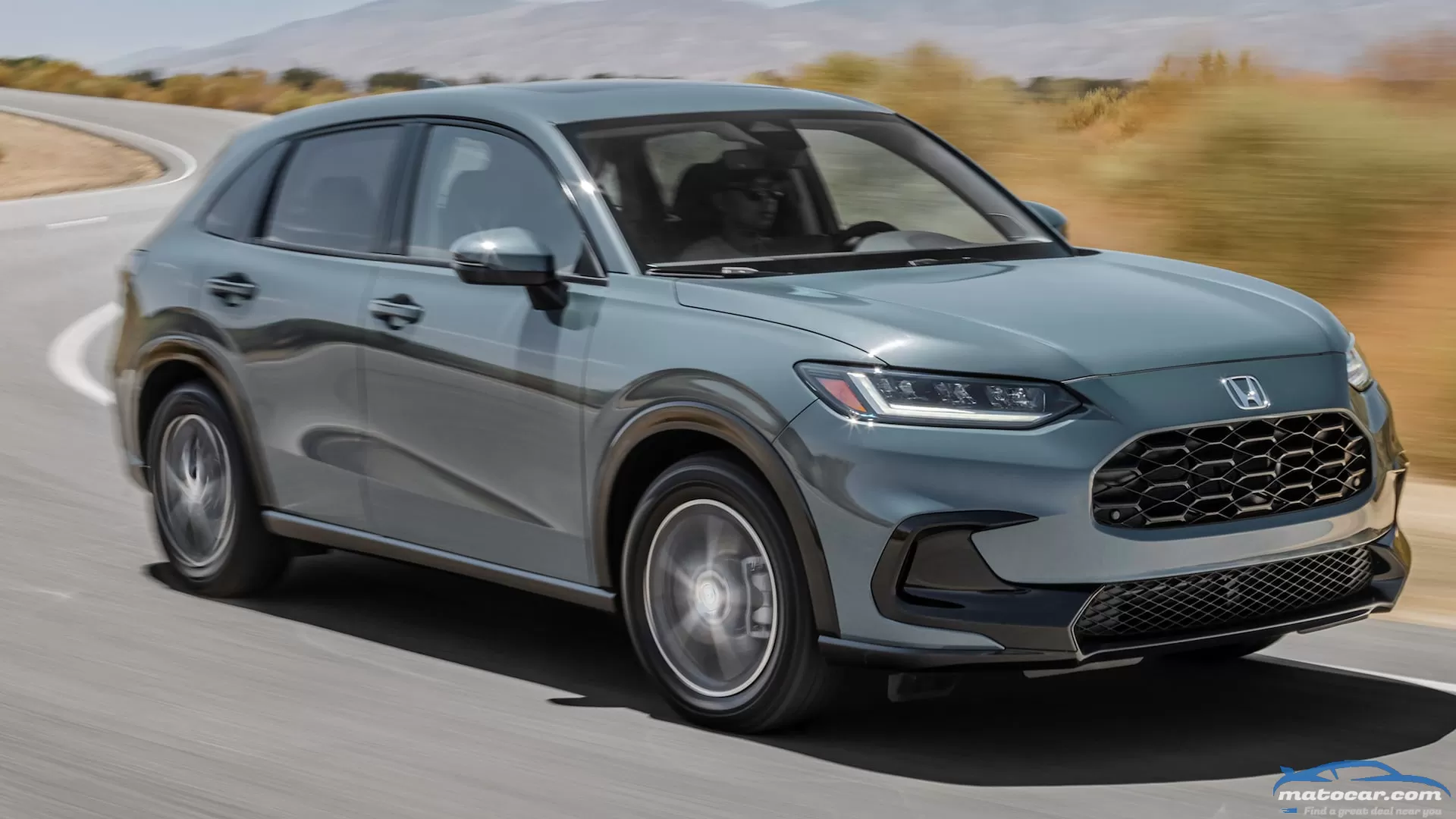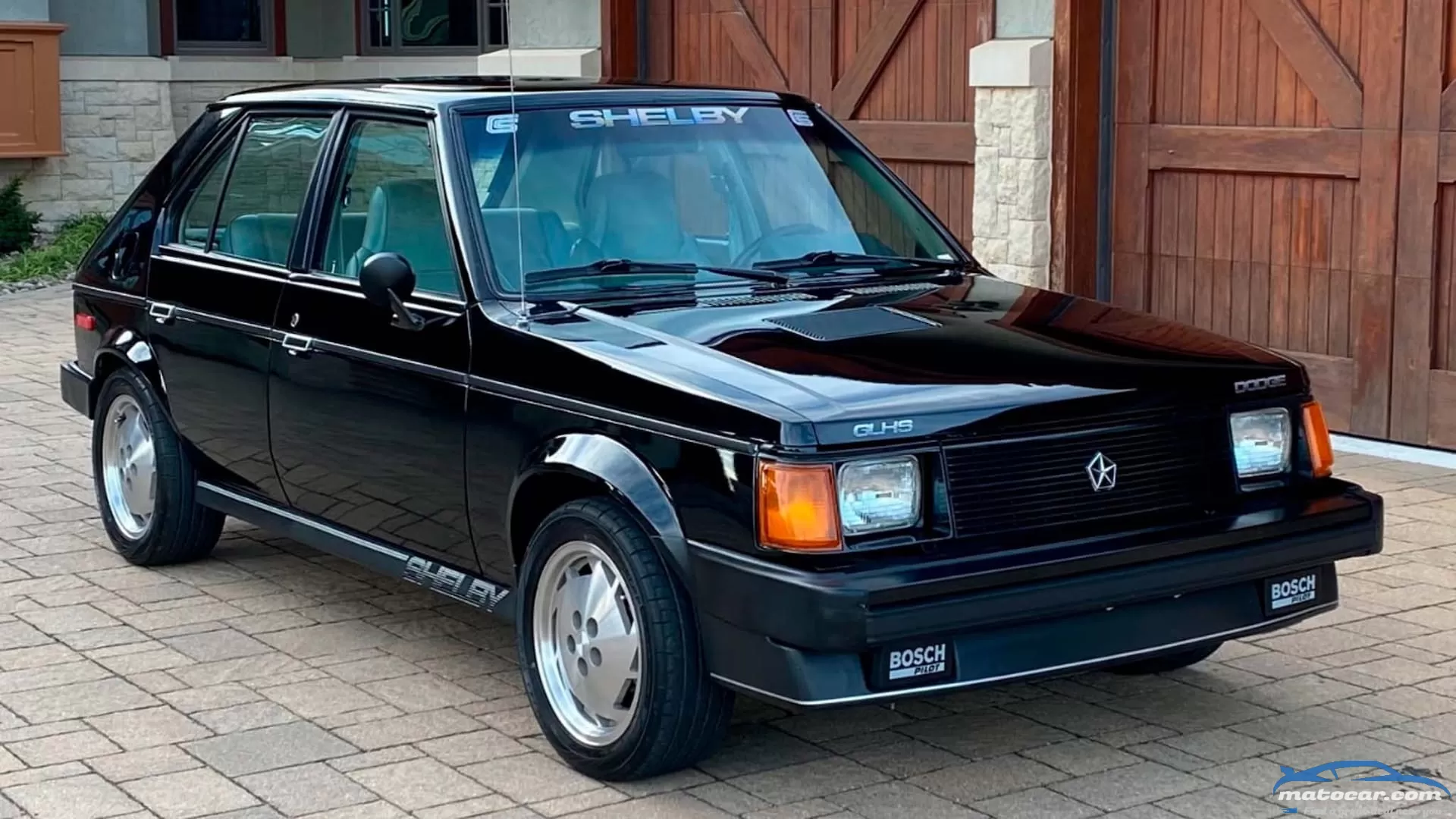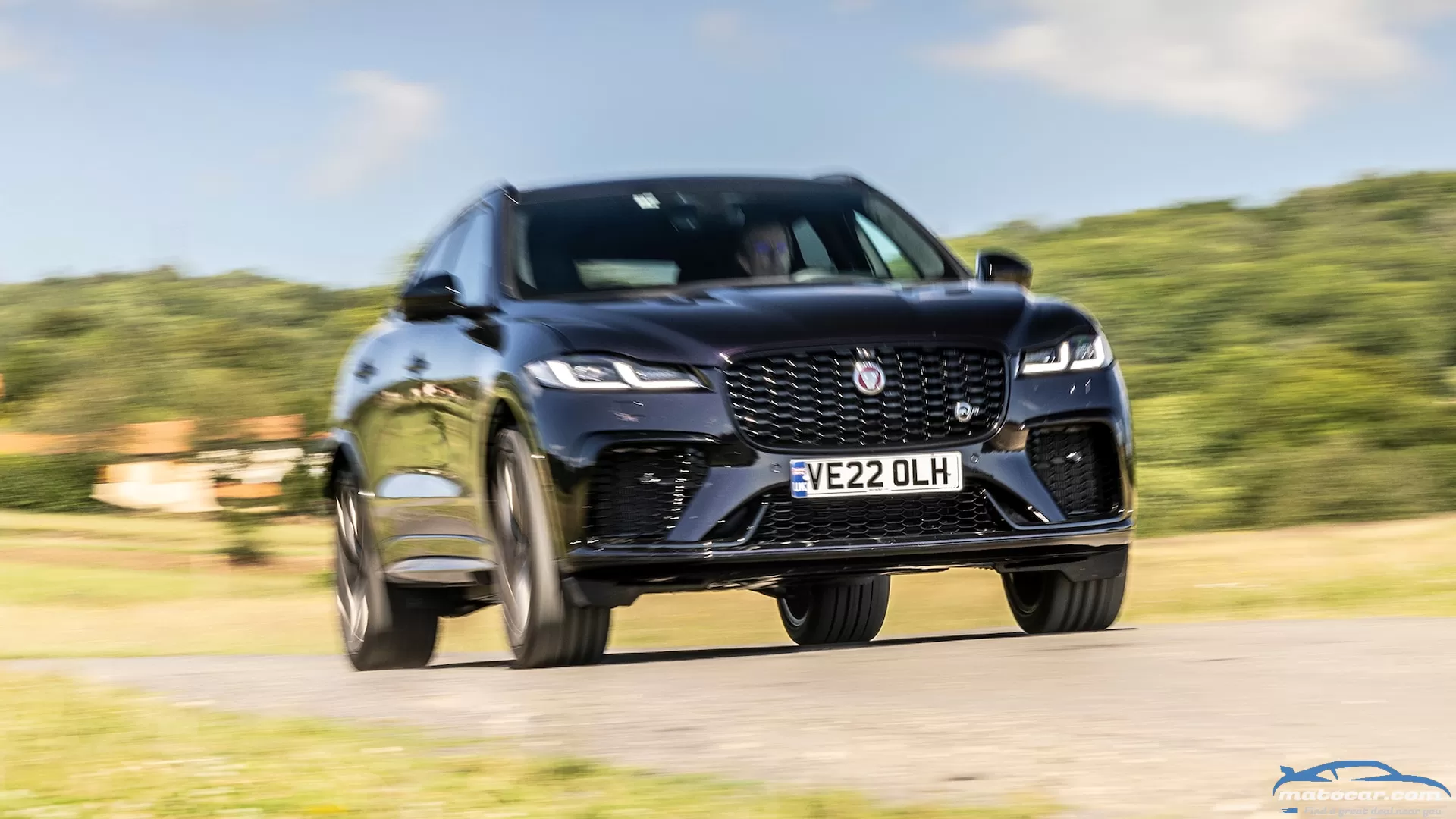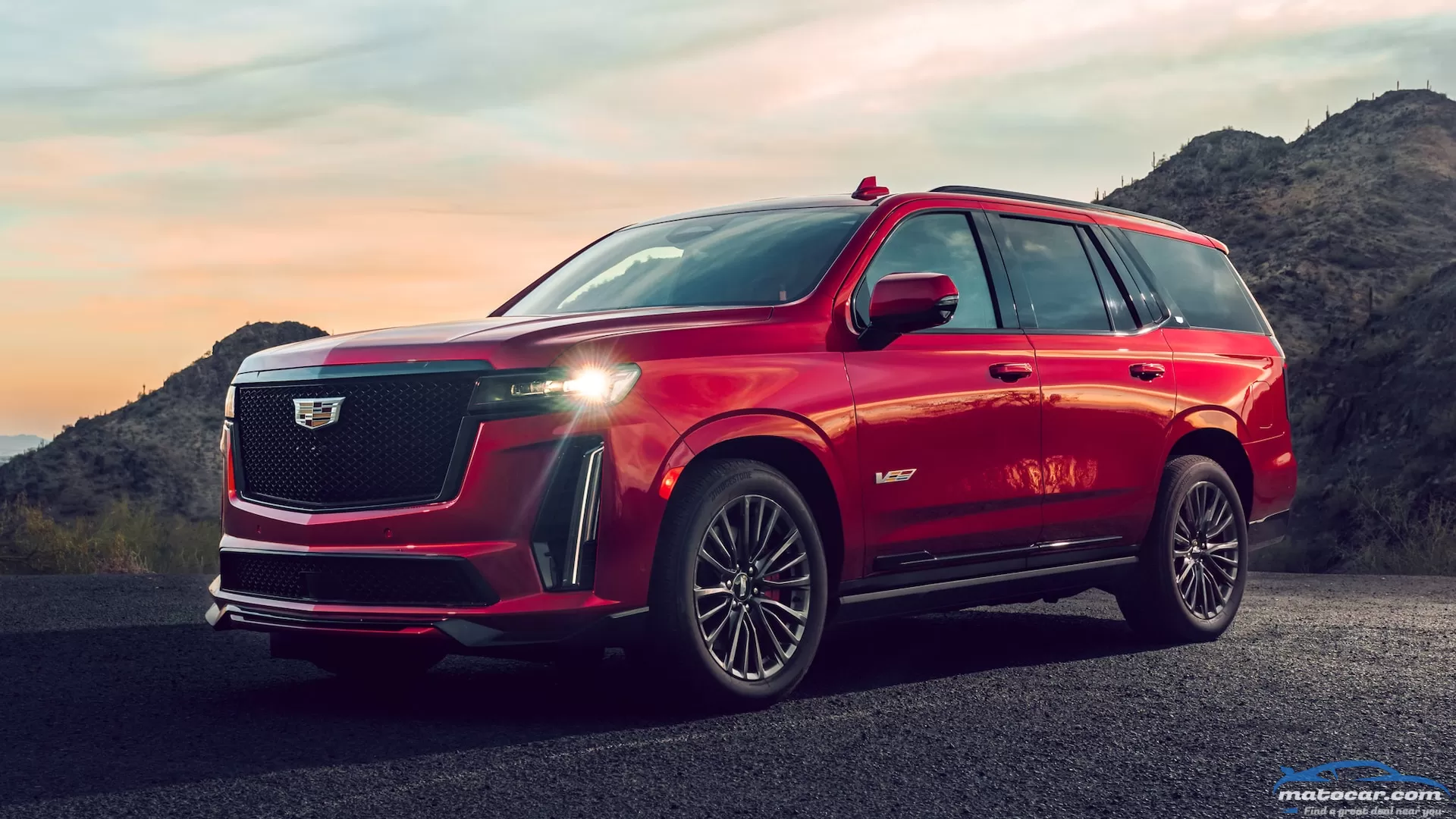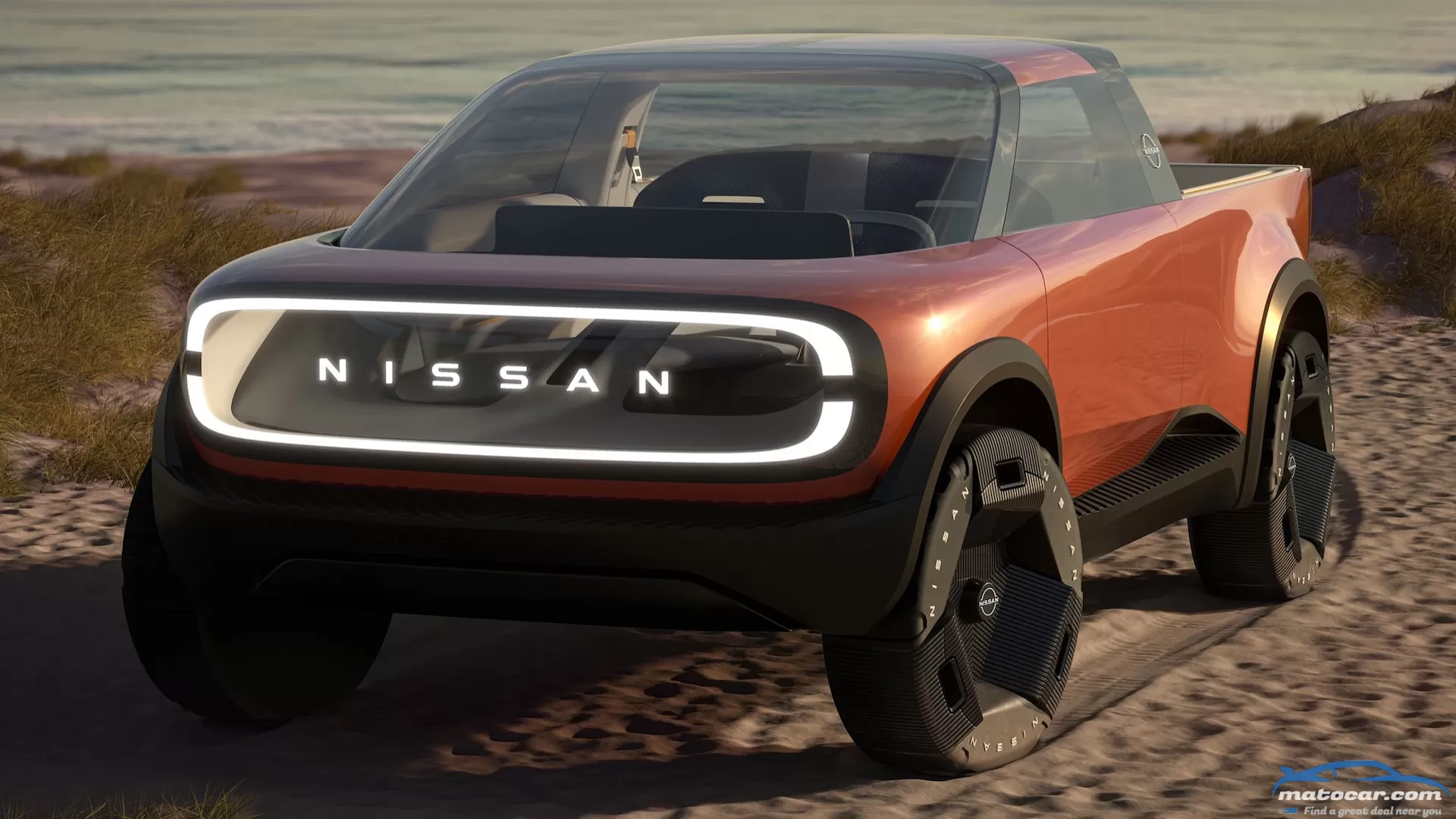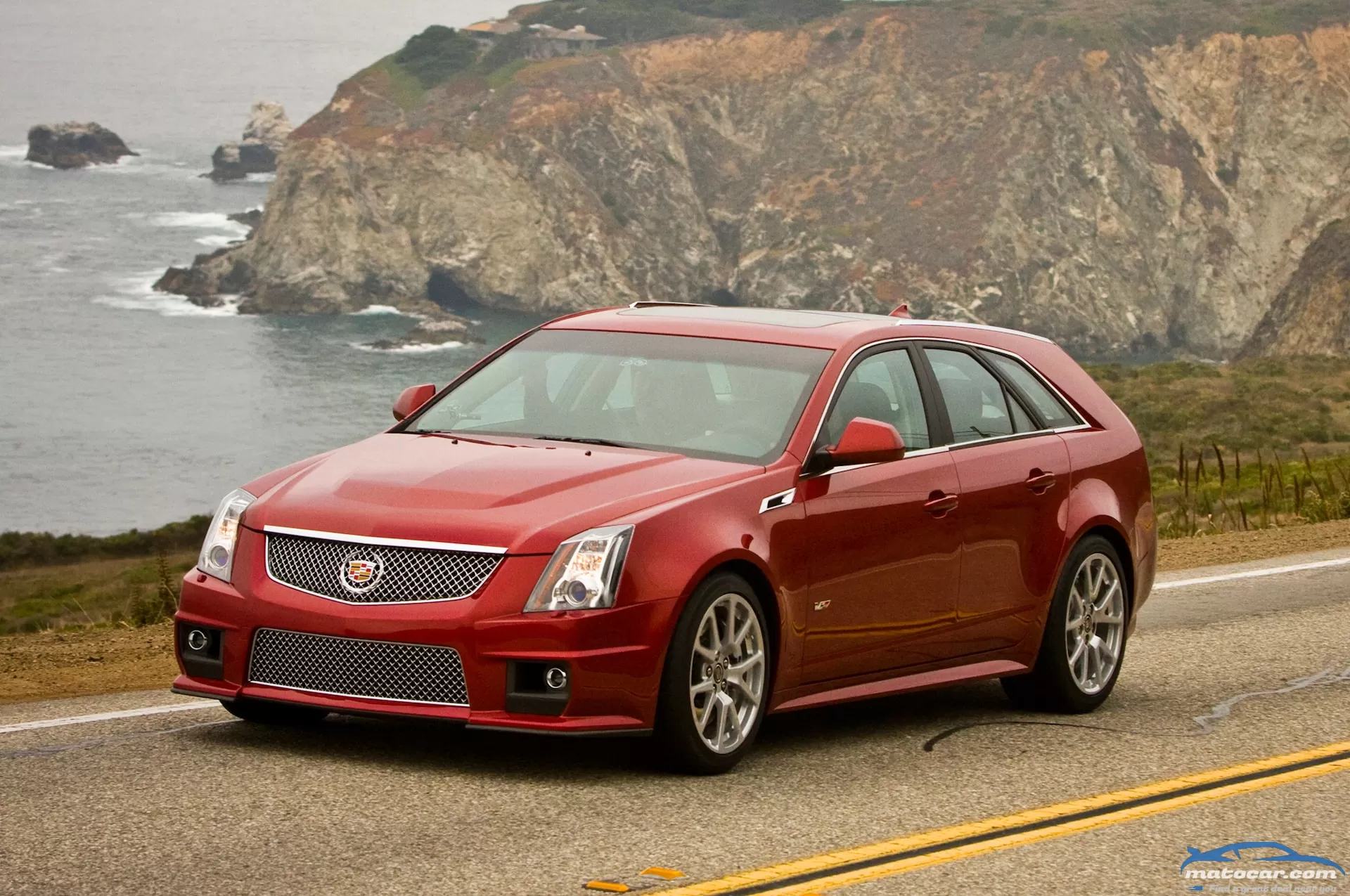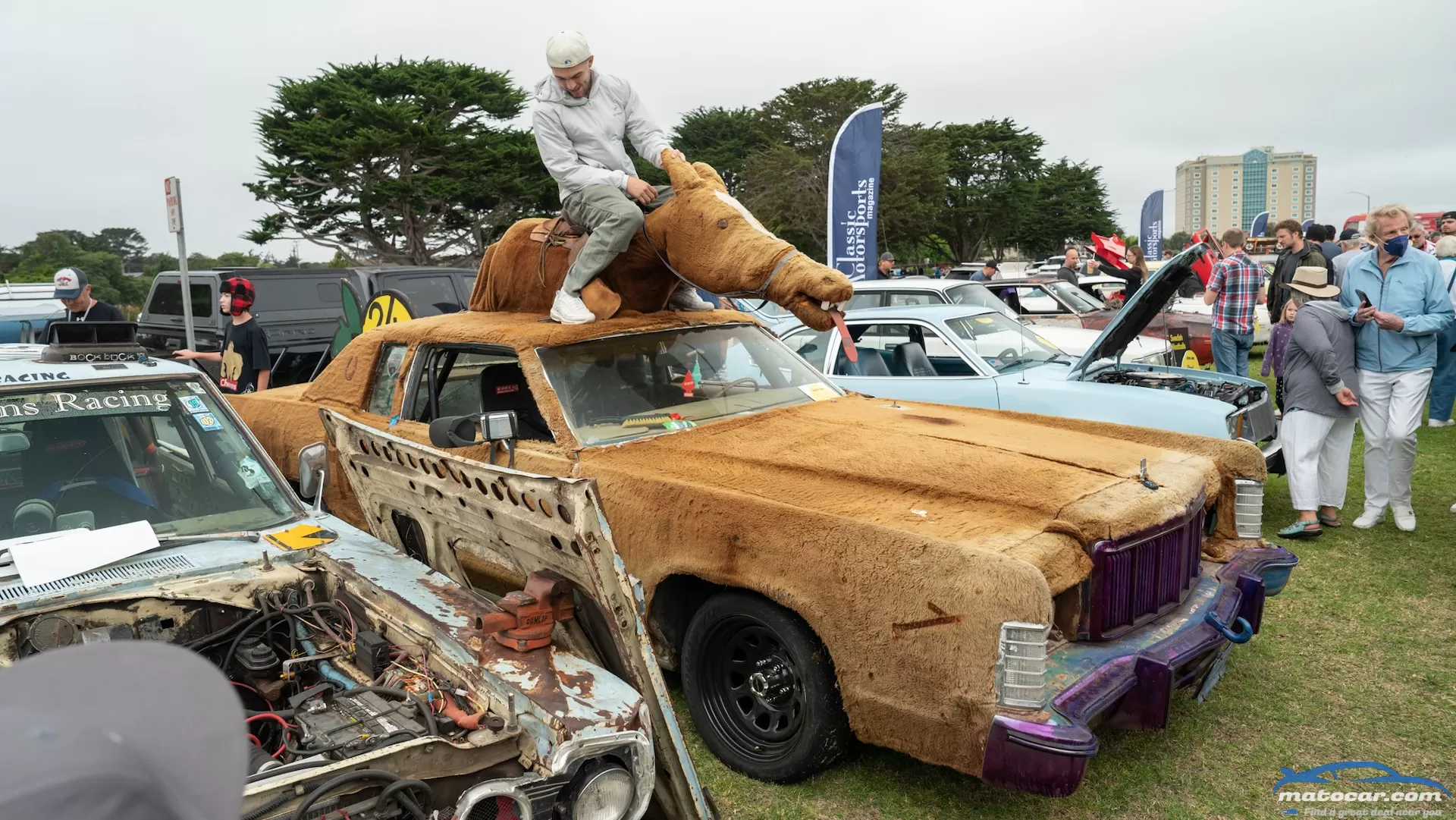No filter. That's the best way to describe what it's like to drive the Morgan Super 3. In most modern vehicles, from a Porsche 911 GT3 to a Tesla Model 3 to a Ford F-150, you're protected by an invisible electronic army, digital shape shifters that seem to warp the laws of physics, changing not just your perception of the road, but also of your talent behind the wheel.Not in the Morgan Super 3. Driving the Super 3 is, essentially, driving the way it used to be, before stability control and lane keep assist and adaptive cruise control established their guardrails of ones and zeros, when the wind streamed through your hair and your elbows stuck out over the bodywork as you wrestled with the steering wheel through turns. It's raw, and it's real.Make the perfect heel-and-toe downshift in the Morgan Super 3, carve the perfect corner, and you know it's all down to you. Make a mistake, and you own it. No filter. And that's what makes the Morgan Super 3 such an irresistible little sports car.The three-wheeled Super 3 takes Morgan back to its roots. The first car this eccentric English automaker built 113 years ago was a three-wheeler, a single driven wheel at the back, and two up front for better steering and stability. Indeed, Morgan built nothing but three-wheelers until 1936 and didn't end full-time production of three-wheeled cars until 1952.The three-wheeler concept was revived in 2012 with the determinedly retro Three-Wheeler, which was powered by an air-cooled, American-made S&S V-twin motorcycle engine mounted transversely across the nose of the car, echoing the powertrain format and layout of Morgan three-wheelers built until 1939.The Super 3 might channel Morgan's origins, but it's anything but a retro car. Look past the number of wheels and lack of electronic frippery, and the rest of it is a thoroughly modern machine.The chassis is a superformed aluminum monocoque, Morgan's first ever. Bolted to the front of it is a large cast aluminum structure that cradles the engine and provides all the pickup points for the multilink front suspension. The single rear wheel is located by a twin-beam swingarm with coil-over shocks on either side, and the beetle-backed bodywork enveloping it is, yes, also superformed aluminum.The floorpan is a non-structural aluminium piece that allows for future powertrain upgrades, including full electric drive.Speaking of drive, the Super 3 rekindles a relationship with Ford Motor Company and Morgan three-wheelers dating back to the F-Series Three-Wheeler built between 1933 and 1952 that was powered by Ford side-valve engines. Under the stubby hood of the Super 3 is a naturally aspirated version of Ford's light and compact 1.5-liter, three-cylinder Dragon engine, used in turbocharged form in the Ford Bronco Sport, as well as the European-spec Ford Focus and Fiesta hatchbacks.The Ford engine drives the Super 3's single rear wheel through a Mazda Miata five-speed manual transmission connected to a bevel box and carbon-fiber-reinforced drive belt. The engine produces 118 hp at 6,500 rpm and 110 lb-ft of torque at 4,500 rpm, which makes the Morgan Super 3 the second-least-powerful car we've driven since the 89-hp Smart ForTwo. (The other car? The 2020 Toyota Yaris XLE, which pumps out 106 hp.) None holds a feeble candle in the wind to Mitsubishi's Mirage, the least powerful new car for sale in America today, which is equipped with a 78-hp 1.2-liter triple.But the headline output numbers don't tell the full story. Because the Morgan weighs little more than 1,400 pounds, those modest outputs deliver spritely performance. The company claims the Super 3 will scoot to 60 mph in about 7.0 seconds and hit a top speed of 130 mph.It feels much faster. That's because the Morgan Super 3 delivers such an elemental, visceral, almost heroic driving experience. It rides so low, you can simply reach over the side and touch the tarmac with your fingertips. It has no roof, no doors, and only vestigial aero screens to keep the bugs out of your teeth.You see the front wheels shimmy and shake and swivel and feel the feedback through the non-assisted steering. You sense millimetric lateral motions through your butt as the single rear tire rides the bumps and cambers the front wheels straddle.The little Ford triple pulls smoothly from low revs, but it really starts percolating from about 3,000 rpm and spins happily to 6,900 rpm, emitting a throaty bark from the optional sport exhaust that exits just past your right ear. The Mazda five-speed transmission is as snickety-snick quick and crisp through the ratios as ever, and the bottom-hinged pedals are beautifully weighted and aligned, perfect dancing partners for your feet.There's a lovely economy about the Morgan Super 3's controls, from the quick throw of the shifter and the short arc of the clutch pedal to the meaty feel of the brake pedal and the lively throttle response. The expressive steering initially feels low geared even though it's only 2.5 turns lock-to-lock. It's then you realize the Super 3 doesn't have a particularly tight turning circle—no bad thing when there are only three wheels on your wagon.It feels a little odd to drive quickly at first, the Morgan Super 3. But you quickly learn that's all part of the three-wheeler experience. The default handling mode is mild understeer, the bespoke, vintage-profile 130/90 Avon Speedmaster tires on the modernist 20-inch alloy wheels hardly offering the footprint to promote instant turn-in responsenor overcome the thrust from the rear wheel.That said, the Super 3 is unlike any four-wheel car when you do get on the power. You don't get the same sensations of roll and squat across the rear axle as you do in a four-wheel car because, obviously, there isn't one. Also, there's no differential, so the drive you do get is instant and unfettered. Get aggressive with the throttle, and you can easily spin up the rear wheel in slower corners—the 15-inch rim is shod with a 195/65 all-season tire—and the Super 3's tail will swing wide, but it all happens progressively.What's so bewitching about the Morgan Super 3 is that from 40 mph to 70 mph on any winding two-lane, you're totally engaged with the art and science of driving. It's a sports car, in the truest sense of the term.Yes, it's minimalist, but cleverly so. You learn to step over the side of the cockpit and brace your feet on an aluminum crossbar in front of the seat before sliding down behind the reach and rake steering wheel. The fixed seats are surprisingly comfortable, and the adjustable pedal box means even those over 6 feet can get comfortable behind the wheel.The interior has been designed to cope with the elements. The seats can be trimmed in water-resistant leather or a vegan technical fabric that's 100 percent waterproof and can be cleaned with bleach. The digital instruments, housed in cast aluminum pods at the center of the dash, along with all the switchgear, will withstand a quick blast from a jet wash.The rectangular "barge boards" along the side of the car that manage the airflow through the cooling radiators on either side of the engine can be fitted with a patented clip system—Morgan's first ever patent—that allows specially designed hard cases, waterproofed soft bags, or racks to be attached to them. The clips, and the hardware that attaches to them, will carry up to 44 pounds. A CNC-machined luggage rack that sits atop the Super 3's bug-tail is also available as an option.We can't buy any of the current four-wheeled Morgans in the U.S. The Super 3, however, is being homologated for sale here, and the first cars are scheduled to arrive stateside in January 2023, priced from $54,000 plus destination and taxes.That sounds pricey when you consider you can buy a well-specified Mazda Miata or one of the Toyota GR86/Subaru BRZ twins for under $40,000, cars that are more practical, sensible daily drivers. But the Morgan Super 3 doesn't play in that territory; it's a sports car that can steal the limelight from noisy, mega-horsepower supercars that are only marginally more practical, can't legally be driven any faster, and cost a whole lot more money.Ferraris and Lambos and Porsches are dime a dozen in places like Beverly Hills and South Beach and Houston and Long Island. But a Morgan Super 3? Now that'll turn heads.2023 Morgan Super 3 Specifications PRICE $55,500 (MT est) LAYOUT Front-engine, RWD, 2-pass, 0-door roadster ENGINE 1.5L/118-hp/110-lb-ft DOHC 12-valve I-3 TRANSMISSION 5-speed manual CURB WEIGHT 1430lb (MT est) WHEELBASE 99.7in L x W x H 141.0 x 72.8 x 44.6 in 0-60 MPH 7.0 sec (mfr) EPA FUEL ECON, CITY/HWY/COMB Not yet rated EPA RANGE (COMB) N/A ON SALE Now Show All
There is a legitimate debate to be had over whether Autopilot, Tesla's lane-centering and adaptive cruise control driver assists isn't as safe or capable as it claims. But as with many things Tesla, things can easily get muddy, and not just because the pioneering automotive automaker evaporated its PR team years ago. Take, for example, The Dawn Project founded by Dan O'Dowd, who also owns Green Hills Software, which technically competes with Tesla's software. O'Dowd himself has kicked off a congressional bid vowing to rid the world of the "scourge" that is Autopilot, and recently released a video showing a Tesla running Autopilot running over a child mannequin to "prove" the system's failings.Of course this gambit went viral, not least because it inspired Tesla's cult-like owners to use their own children—or try and borrow other children, and we're not joking—to disprove The Dawn Project's claims. Now, Tesla is declaring the original video is defamatory and demanding that the clip be removed, since it "misrepresents" the safety and capabilities of Autopilot and FSD (the step-above, still-not-yet-in-production Full Self Driving feature Tesla is real-world testing using its customers). As regular followers of Tesla's ups and downs are surely aware, there is mounting evidence that the Autopilot software isn't as perfect as Tesla and CEO Elon Musk claim it is. The National Highway Traffic Safety Administration (NHTSA) is currently investigating the feature after several instances of Teslas crashing into stationary vehicles or objects roadside, namely emergency vehicles.The Video In QuestionOne video shows a Tesla Model 3 with FSD Beta 10.12.2 running over a child-sized mannequin in a crosswalk; the Tesla never slows down, even once it hits it. Another clip has better production value and is taken at Willow Springs International Raceway using a similar child-like mannequin, which is summarily mowed down by a Tesla in the same manner as in the other video.Initially, the response from Tesla's overzealous fans with small children of their own was to march those kids in front of their moving cars to "prove" that FSD and Autopilot work as intended. Fortunately, no children were sacrificed at the altar of Tesla's public relations, but YouTube did step in to remove many of those videos, leaving for the originals made by The Dawn Project.Now Tesla, according to a letter attained by the Washington Post, is demanding that The Dawn Project and Dan O'Dowd remove those videos because of their defamatory nature that have disparaged "Tesla's commercial interests" of Tesla's Full Self Driving technology. Dinna Eskin, senior director and deputy general counsel at Tesla, also demands in the letter that O'Dowd and The Dawn Project "immediately cease and desist further dissemination of all defamatory information, issue a formal public retraction within 24 hours and provide Tesla with the below demanded documentation."Many of the complaints or concerns aired by O'Dowd and his project are seemingly legitimate or possible to make in good faith, though it seems best to leave such investigation to the unbiased experts at NHTSA, which, again, has begun investigating other safety issues surrounding Tesla's Autopilot. While not every bad messenger needs to have a squeaky clean background, it's tough to paper over the obvious conflicts of interest between O'Dowd and software related to driver assistance features and, well, Tesla.Who is Dan O'Dowd?Dan O'Dowd is a software engineer who graduated from the California Institute of Technology with a Bachelor of Science in Engineering in 1976. He then went on to work on embedded development tools for early microprocessors used in Mattel's handheld electronic games of the late 1970s. O'Dowd also worked with National Semiconductor (who is now owned by Texas Instruments) to design the NS32000 32-bit microprocessor used in 1980s personal computers such as the IBM RT PC, the BBC Micro, and others. His company, Green Hills Software, was founded in 1982 and its claim to fame was being the "first and only" software company to develop an operating system (OS) that meet the NSA's certification for EAL 6+ High Robustness, meaning that it's incredibly difficult to attack this OS no matter how well funded and "hostile" your hacker is.Green Hills also states that it developed the OS for the Boeing 787, the Lockheed Martin F-35 multirole fighters, Boeing B1-B bomber, and Orion Crew Exploration Vehicle manufactured by Lockheed Martin and operated by NASA (which, coincidentally, has a glass cockpit derived from the 787's). Green Hills is also the Advanced Driver Assistance System (ADAS) software supplier for the 2022 BMW iX EV crossover, which raises yet another, if slightly tangential conflict of interest here.O'Dowd also had a brief run as a Democratic primary candidate for California's Senator Seat (eventually won by Alex Padilla) and his campaign message was all about cybersecurity and Tesla's FSD and Autopilot safety. It was roughly around this time that The Dawn Project launched but it was a full-page New York Times ad back in January 2022 that got the attention of the general public. In that paid ad, The Dawn Project led with "Don't Be A Tesla Crash Test Dummy" and then laid out a case for why Autopilot and FSD were "unsafe at any speed." It and O'Dowd then began several video campaigns demonstrating the failures of Autopilot and FSD with child mannequins as was demonstrated above.Again, while Tesla may have a case against O'Dowd and O'Dowd might be merely asking fair safety related questions, the situation here is, frankly, a bit of a mess. To answer the obvious question here, which is whether or not a Tesla will indiscriminately flatten children should it meet them in a roadway while its Autopilot or FSD features are active, a lot more investigation needs to take place. We'll need more scientific endeavors than possibly biased social media clips of mannequins (or real children) being aimed at by moving Teslas. So, while it might seem like Tesla has a brewing problem here, so far, there isn't much to go on. That could change should anything come from the separate investigation being conducted by NHTSA and any corrective actions it recommends. But for now, can we think of the poor mannequins? Oh, and while Tesla has no PR team to reach out to, we assume (based on its cease and desist letter to O'Dowd) the automaker would prefer you not try and replicate The Dawn Project's, uh, project.
audi s3 Full OverviewProsMore power than everSharp, sporty exterior stylingTech-focused interior ConsLacks standard driver aidsAlmost too quiet at speedA bit pricey with optionsWe're hustling along at freeway speeds late one weekend evening when we see it off in the distance: yet another L.A. snarl of taillight ribbons looming ahead. Time to drop down a gear in the 2022 Audi S3. As its turbo-boosted 2.0-liter inline-four pegs near 5,000 rpm, the digital gauges surge and a buzz crescendos from its blackened exhaust tips.Trailing on the S3's strong brakes, which are capable of hauling Audi's entry-level sport sedan from 60 mph to 0 in an impressive 108 feet, we look for a gap. There it is. Back on the gas, the 2022 S3's seven-speed twin-clutch automatic transmission shifts near redline, and we're once again rushing toward home, luxuriating in its premium-feel, leather-lined cabin.The line between sport and luxury is blurring ever further as premium brands like Audi continue to refine and redefine vehicles like its newly updated 2022 S3. Buyers increasingly want it all, and when it comes to gateway models like the S3, first impressions can mean everything.Audi S3 0-60 and Quarter-Mile TimesSpeaking of, our test team's initial impressions of the updated S3 were positive. The S3's aforementioned 2.0-liter turbo, with 306 horsepower and 295 lb-ft of torque, is an engine the team called "peppy," with good midrange power from 3,000 rpm. It's a highly boosted four-cylinder that's more than capable of motivating the 3,555-pound S3 to 60 mph with authority. The 4.6-seconds-to-60-mph sprint we recorded is a tenth of a second shy of Audi's official number for the 2022 S3, with the quarter-mile coming in 13.2 seconds at 105.2 mph.Road Test Analyst Alan Lau had this to say about getting the S3 into its optimum straight-line attack mode: "It has launch control along with a boost gauge. I find it performs better launching as soon as the boost reaches max. Wait too long and you lose some boost and it gives a slower launch."One of the Quattro all-wheel-drive-equipped S3's closest competitors in the space is the Mercedes-AMG A35 4Matic. The slightly lighter (3,480 pounds) 2021 A35 we tested with AMG's 2.0-liter turbo-four with 302 horses just nipped the new S3 in straight-line numbers, at 4.4 seconds to 60 mph and on to a quarter-mile of 13.1 seconds at 105.1 mph. But the S3 out-braked the A35 at the aforementioned 108 feet to 112 feet in our testing.S3 Around the Skidpad and Figure-EightIn the dynamics and handling departments, the S3's 0.92 g on the skidpad and 25.5 seconds at 0.71 g (avg) on our MotorTrend figure-eight were bested by the A35's 0.96 g skidpad and 24.7 seconds at 0.77 (avg) figure-eight. While the A35 is the clear dynamic winner, short of taking the cars to the track, the rest of the numbers are close enough to make it a wash between the two German sedans in the type of day-to-day driving most owners will experience. Oh, and the Audi's more fuel-efficient at 23/32 city/hwy versus 22/29 city/hwy.Road Test Editor Chris Walton thought the S3 reminded him of another new German car, the new eighth-generation Volkswagen GTI, which isn't super surprising given they're both underpinned by the Volkswagen Group's MEB Evo platform. But he remarked that he felt the S3 had "a little more edge, with good noises and better traction, trustworthy brakes on every lap, and a healthy amount of grip on the skidpad with a very neutral attitude. It puts the power down quite well on the exit with just a hint of understeer that goes away as you open the steering."Walton did report that although the S3's transmission was "unbelievably smooth" on upshifts, he had issues with downshifting and had to resort to manual mode because the car wasn't getting the downshift timing correct as he maneuvered it through our dynamic course.Quiet Cabin and Abundant OptionsOut on the open road, the 2022 Audi S3 exhibits some impact harshness over rough pavement, but nothing out of sorts for a car of its ilk. Like other Audis, the S3 has a drive select mode system that tightens up shift points and other factors like steering feel, which Walton felt was heavy for heaviness' sake in Dynamic mode, though you can tailor settings in Individual mode, which he used to dial the feedback to his liking.One thing you will notice at speed is how isolated the S3's stylized and tech-heavy cabin is. For a compact sport sedan, it's almost too much so, but that's a debatable point as it showcases the luxury side of this car's equation.Speaking of, the 2022 Audi S3 checks most of the boxes you'd expect for a vehicle that starts at $45,945. It also looks the part of a sports car, with aggressive front and rear fascia treatments, and a slightly lower stance than its A3 sibling. If you want the real good stuff though, you will pay for the privilege, including the $2,800 Premium Plus package (adaptive cruise control, advanced safety and convenience features), and the $2,250 Technology package (Audi virtual cockpit with its 12.3-inch screen, Bang & Olufsen sound).This particular car also came equipped with three optional interior and exterior appearance packages, the highlight of which is the $1,950 Black Optic package that blacks out several trim elements and adds a 19-inch wheel/performance tire setup. All that black contrasts nicely with the Tango Red metallic paint scheme.At $55,890 all-in, this particular test car is on the pricey side, though it's not out of line with its German counterparts equipped with similar options. But even in its base form, the 2022 S3 delivers more than enough presence and performance to satisfy customers looking for something special at the more affordable end of the Audi lineup.Looks good! More details?2022 Audi S3 (Premium Plus) Specifications BASE PRICE $49,695 PRICE AS TESTED $56,840 VEHICLE LAYOUT Front-engine, AWD, 5-pass, 4-door sedan ENGINE 2.0L Turbo direct-injected DOHC 16-valve I-4 POWER (SAE NET) 306 hp @ 5,450 rpm TORQUE (SAE NET) 295 lb-ft @ 3,000 rpm TRANSMISSION 7-speed twin-clutch auto CURB WEIGHT (F/R DIST) 3,555 lb (58/42%) WHEELBASE 103.6 in LENGTH x WIDTH x HEIGHT 177.3 x 71.5 x 55.7 in 0-60 MPH 4.6 sec QUARTER MILE 13.2 sec @ 105.2 mph BRAKING, 60-0 MPH 108 ft LATERAL ACCELERATION 0.92 g (avg) MT FIGURE EIGHT 25.5 sec @ 0.71 g (avg) EPA CITY/HWY/COMB FUEL ECON 23/32/27 mpg EPA RANGE, COMB 392 miles ON SALE Now Show All
ram 1500-trx Full OverviewYes, we're calling our $91,185 2021 Ram 1500 TRX a good road trip vehicle in a time when the premium gas it guzzles costs nearly $6.00 per gallon near our office. No, we don't believe things are better just by virtue of being expensive, but sometimes, an expensive thing is expensive because it's actually good, and when it comes to long-distance travel, our Ram TRX long-term tester is king.Let's start with a few simple facts. If you can comfortably afford a $90,000 truck, you can afford the gas. You may not want to, but it isn't hard to find another truck with better fuel economy if that's the case. Either way, you know what you're getting into. If you're even considering a TRX, you want what it has to offer: big power, cushy off-road suspension, all the comfort features, and an overdose of truck attitude. More than anything, you want a truck. If you're going to get a truck anyway, and you want to be king of the interstate on your next family vacation, the Ram 1500 TRX is your chariot. Those fancy Bilstein shocks might've been developed for desert racing, but they're equally awesome on the highway. The TRX floats over the bad pavement left in the wake of 80-ton big rigs as easily as it goes down a trail.Available only with the four-door Crew Cab, the TRX is as massive on the inside as it is on the outside. People riding up front get big, comfy captain's chairs, and the folks in the back have all the legroom in the world. Blow $21,000 on options like we did, and you get everything from 12-way power leather heated seats, cooled front buckets, leather-wrapped grab handles, and a heated steering wheel to make the trip more comfortable. Before you even get in, you can pre-condition the cabin with the remote start function. That's a great way to enjoy the Ram's V-8 burble while making the cabin nice and comfy.You can also make those long interstate slogs easier on the driver. Our Ram has adaptive cruise control, lane keeping assist, blind-spot warnings, automatic wipers, a head-up display, and more. That's on top of the standard 12.0-inch portrait-oriented infotainment screen that does split-screen CarPlay or Android Auto so you can still use other functions at the same time.Then, there's the driver's favorite feature: 702 supercharged horsepower, standard. Merging on the freeway? Going up a hill? Passing slow traffic? Got the truck loaded down with gear or a trailer? All of the above, simultaneously? Just apply throttle, and all your problems are solved.You know how it goes. At some point in the road trip, there's always that one car up ahead that's camping in the left lane, pacing traffic in the right lane instead of passing. Once enough traffic stacks up behind the two, your options for getting ahead become scarce and don't last long. With a 702 hp V-8, you can make the most of them.We do, of course, have to talk about the gas mileage. If you're coming out of a truck that's 12 years old like the average new vehicle buyer in America, 10 to 14 mpg is nothing new for you. Might even be an improvement. On a recent trip to Phoenix and back, we set the cruise control at 80 mph, and the truck still self-reported more than 14 mpg (the EPA highway rating). Not great compared to other modern trucks, but not all that bad considering this thing is a flying brick with ample seating for five powered by a massive supercharged 6.2-liter V-8 being driven by people who can expense the gas.Sure, filling the 33-gallon tank hurts at $6 a gallon (or sometimes more), so much so we advise people to fill up at a quarter-tank so they don't have to run two transactions when the credit card cuts off—$175 fill-ups suck, but at least you can go nearly 400 miles on that gas, hopefully to a region with lower prices.The TRX is wildly expensive and impractical in many ways, but if you're going to buy one anyway, you'll be happy to know it's as pleasant to drive on the good old-fashioned family vacation as it is crossing the country off-road on the Trans-America Trail.Looks good! More details?More on Our Long-Term Ram 1500 TRXThe Ram 1500 TRX Joins the MT GarageWhich Is Quicker—a Charger SRT 392 Scat Pack or the TRX That Towed It to the Track?…And What About a TRX or a Rivian R1T?The TRX Isn't a Great Forest Service TruckBut It Is a Good MudderHuge Power Saves This Ship
WHAT IT IS: The Buick Wildcat EV concept showcases the brand's new face, logo, and design language for a lineup of future electric vehicles. Each will be called Electra, followed by an alphanumeric designation. Although the Wildcat is a coupe, the upcoming Electra models will be all SUVs (at least initially), beginning with a compact offering in 2024. By 2030, Buick's entire lineup will be badged Electra. Two compact two-row models are planned. One is lower, sportier, more car-like, and geared toward couples; the other rides higher with more cargo room for families.WHY IT MATTERS: GM saved the Buick brand because of its popularity in China, but cool electric SUVs could make it hip in North America and restore some former glory. Besides, the more EVs that share GM's Ultium system of batteries and platforms, the greater the company's ability to reduce costs and keep them more affordable.PLATFORM AND POWERTRAIN: All these new electric vehicles use GM's BEV3 electric architecture and Ultium battery technology developed with partner LG Chem. The first Electra SUV's powertrain could mimic that of the 2023 Cadillac Lyriq, which launches with a single motor in the rear, good for 340 hp, 325 lb-ft of torque, and about 300 miles of range.An all-wheel-drive performance variant should follow in 2023. Buick has shown previous concepts with dual electric motors and a 12-module 100-kWh battery, providing 583 hp, a 0-60-mph time of 4.3 seconds, and about 370 miles of range. When the first production Electra SUV arrives in 2024, it will also feature one-pedal driving, on-demand regenerative braking, and GM's Ultra Cruise hands-free driver assist technology. A giant screen will stretch across most of the cockpit.ESTIMATED PRICE: $55,000EXPECTED ON-SALE DATE: 2024
honda hr-v Full OverviewProsHigh-quality interiorSpacious cabin for a small SUVStandard active safety tech ConsSlow, even for an entry-level SUVSmall 7.0-inch touchscreen on two of three trimsLess efficient than beforeTime for some crazy talk: The redesigned 2023 Honda HR-V might soon be the company's only SUV with an MSRP comfortably less than $30,000. That's not big news for car enthusiasts, but buyers not aware of the new 2023 Honda CR-V's upmarket move are in for a surprise. Suddenly, price-conscious CR-V intenders will be kicking tires on the more affordable HR-V, which takes on a more important role in Honda's SUV lineup. Those buyers will find in the 2023 Honda HR-V a refined ride with influences from the excellent Civic as well as from the outgoing HR-V—the latter not quite in the way we'd like.0-60-MPH Acceleration Versus Its RivalsAt MotorTrend, we track-test cars—even small SUVs like the 2023 Honda HR-V—so we can establish how each vehicle's performance compares to the competition. And in this Honda's case, it's not a great story.Every new HR-V is powered by a 158-hp naturally aspirated 2.0-liter I-4 good for 138 lb-ft of torque. Those numbers match the latest Civic, which uses the same engine. As you'd expect, the engine sweats less with the front-wheel-drive Civic sedan, which is hundreds of pounds lighter than our 2023 HR-V EX-L test SUV with more features and all-wheel drive.OK, so let's compare the new HR-V's 9.8-second 0-60-mph time to vehicles its own size. A 2022 Toyota Corolla Cross XLE AWD is nearly a half-second quicker (9.3 seconds), while a Subaru Crosstrek with a 2.5-liter engine is a startling 2.0 seconds quicker. As if that isn't enough, the AWD Subaru is also more efficient. Even against the last-gen HR-V, the new model comes up short; a 2019 HR-V Sport AWD we tested reached 60 mph in 9.6 seconds.Behind the wheel, the HR-V feels slow, but you can still execute highway passes as long as you plan them out a bit. That type of compromise used to be a given in this segment, but that's no longer the case. The Kia Seltos, Subaru Crosstrek, and a couple other competitors won't feel quite as slow as the HR-V. It's not the end of the world, and it won't be the top priority for most buyers, but it's worth noting. This engine doesn't show much power until it revs past 4,000 rpm.Braking and HandlingThe 2023 Honda HR-V doesn't gain competitive ground in 60-0-mph panic-braking, either. Or, rather, it covers more ground than its competitors. A distance of 125 feet is fine for a small SUV like this one, but so is 120 feet (the Corolla Cross), 114-124 feet (two Crosstreks we've tested), or 114 feet (a 2019 HR-V). Clearly, this Honda isn't a numbers car, but at the test track we found brake-pedal feel to be fine for a daily driver. The brakes also remained trustworthy and consistent across our figure-eight testing, being both effective and predictable.On the figure-eight course—a MotorTrend evaluation that assesses acceleration, handling, braking, and the transitions in between—the 2023 HR-V finished in 28.5 seconds at 0.56 g (average), placing it behind the most recent Subaru Crosstreks, and the Toyota Corolla Cross and Kia Seltos Turbos we tested. The steering felt a little heavy but was precise. The engine displayed merely adequate power, and made lots of noise.The new HR-V's story improves away from the track. Its continuously variable transmission feels well-tuned around town and on the highway, delivering smoother performance than any conventional or dual-clutch automatic ever could. The suspension is well-damped for a small and inexpensive SUV, too. In other words, put up with the mild acceleration and there's a payoff in the general feeling of solidity you don't get with all of the HR-V's rivals.Ups and DownsHonda backs up that feeling with an interior sprinkled with surprising and delightful touches. There's soft material on the side of the center console (perfect for resting your leg against during a long red light), and you get the honeycomb dash-trim design we've seen on the Civic and CR-V. That real metal trim disguises air vents and separates two physical knobs on top to control the audio system (volume and tuning), as well as three knobs below for the HVAC system. A small open storage area can hold your keys, and the back seat is spacious for such a small SUV.You simply don't get these touches on every HR-V competitor. Where many of them make up ground is digital screen-space. The 2023 HR-V LX and Sport trims come standard with a 7.0-inch touchscreen—smaller than what you can get elsewhere; a larger 9.0-inch unit comes on the top EX-L trim. Apple CarPlay and Android Auto are standard across the line, but we'd welcome a bigger screen or one tilted a bit toward the driver on the lower two trims. By the way, we asked Honda whether it expects any feature omissions due to parts shortages affecting the industry, and the automaker said all HR-Vs should have "the full features and functions listed for each trim level." Great.The entry-level SUV segment is much larger than it was when the first-generation HR-V arrived, which helps put the Honda's pros and cons into perspective. With fuel economy and driving range, for example, it doesn't quite keep up with our chosen competitive set. An EPA-rated 26 city/32 highway mpg with FWD and 25/30 with AWD is not bad on its own, but it's inferior to the 2022 Toyota Corolla Cross—31/33 mpg with FWD and 29/32 with AWD—and the AWD-only Subaru Crosstrek. For the 2023 model year, the Subaru comes in at 28/33 mpg with its standard 2.0-liter engine and 27/34 with the 2.5-liter unit.The Subaru also holds a huge advantage compared to the Honda in combined city/highway driving range; you'll travel about 100 miles farther in either automatic-transmission Crosstrek than you will in the Honda.The TakeawayThe Honda HR-V remains a good choice in its second generation. But with its physical growth, the new 2023 model is slower and less efficient than a couple key competitors. The former isn't a huge deal for an entry-level SUV, but if you don't need to make that compromise, why should you? In the HR-V's case, it would be because of the trust some have in the Honda name and because the SUV drives well. The Civic-based platform means the 2023 Honda HR-V feels good on the road before you even consider its spacious interior. Standard Honda Sensing safety tech and good anticipated safety-test results should also provide buyers with confidence.Honda loyalists should also appreciate the new interior design and improved HVAC system, but cross-shoppers will want to consider what they really want from an inexpensive SUV. The Kia Seltos is spacious and much quicker, but it lacks a five-star overall safety rating from NHTSA. Subaru's popular Crosstrek offers standard AWD, better efficiency, and a good driving experience, but doesn't look like a traditional SUV.Especially in LX and Sport trims, the 2023 Honda HR-V represents the brand well enough in this crowded space. For the rare customer seeking a loaded HR-V EX-L, however, we suggest giving a closer look to the competition, and especially the new 2023 CR-V.Looks good! More details?2023 Honda HR-V AWD (EX-L) Specifications BASE PRICE $30,195 PRICE AS TESTED $30,590 VEHICLE LAYOUT Front-engine, AWD, 5-pass, 4-door SUV ENGINE 2.0L port-injected DOHC 16-valve I-4 POWER (SAE NET) 158 hp @ 6,500 rpm TORQUE (SAE NET) 138 lb-ft @ 4,200 rpm TRANSMISSION Cont variable auto CURB WEIGHT (F/R DIST) 3,271 lb (58/42%) WHEELBASE 104.5 in LENGTH x WIDTH x HEIGHT 179.8 x 72.4 x 63.4 in 0-60 MPH 9.8 sec QUARTER MILE 17.5 sec @ 83.0 mph BRAKING, 60-0 MPH 125 ft LATERAL ACCELERATION 0.80 g (avg) MT FIGURE EIGHT 28.5 sec @ 0.56 g (avg) EPA CITY/HWY/COMB FUEL ECON 25/30/27 mpg EPA RANGE, COMB 378 miles (est) ON SALE Now Show All
In the late '70s, the automotive performance world had been decimated by government regulations and soaring gas prices. MPG and going far had replaced having fun and going fast. If you were a hot-rodder, it was a dark time. Things over at the Chrysler Corporation were especially bad and the company was on the verge of going belly-up. Then along came a guy named Lee Iacocca to try and right the floundering ship. Spoiler alert: He pulled off a minor miracle and saved Chrysler.
jaguar f-pace Full OverviewProsOne of the last supercharged V-8sGreat balance between sport and luxuryComfortable seats ConsThirsty engineBad sun-glare from center consoleEdition 1988 upgrades too subtle for someIt's a warm Saturday afternoon in Paris and I've just been handed the keys to a 2023 Jaguar F-Pace SVR Edition 1988. "We'll pick it up in London on Tuesday morning," say the folks from Jaguar Special Vehicle Operations before waving goodbye.Racing HistoryThe Edition 1988 version of the Jaguar F-Pace SVR SUV celebrates an epic Jaguar win in the 1988 24 Hours of Le Mans endurance race, a victory that ended a 31-year drought in the world's greatest sports car race for the storied British marque. The Edition 1988's deep purple-black paint—Midnight Amethyst is the color—with gold detailing pays homage to the purple and yellow highlights on the livery of the Jaguar XJR-9 that crossed the finish line in first place shortly after 3 p.m. local time on Sunday, June 12, 1988.The race had been a close-run event. Dutchman Jan Lammers, who had shared the No. 2 Jaguar with fellow Formula 1 driver Johnny Dumfries and promising newcomer Andy Wallace, began the final lap just 100 seconds ahead of the menacing Porsche 962 driven by talented all-rounder Klaus Ludwig, whose teammates were five-time Le Mans winner Derek Bell and the fast and versatile Hans Stuck. Lammers held on, though, and Jaguar finally ended Porsche's seven-year Le Mans domination.That year was the second-last without any chicanes on the famous Mulsanne Straight to slow the cars. During the race, the slippery WM-P88 Peugeot driven by French driver Roger Dorchy hit 252 mph just before the gentle right-hand kink—now the site of the second chicane—that led into Mulsanne Corner.The Jaguar XJR-9 topped out at 245 mph. "They tell me you can overtake slower cars at the kink without lifting," Wallace told the U.K. 's Motor Sport magazine at the time, "but I'll practice that when the track's clear." This is the same Wallace who 30 years later would drive more than 600 miles at more than 245 mph while testing for his record-breaking 304-mph run in the Bugatti Chiron Super Sport 300+. It's an intimidating place, Le Mans. Always has been. Always will be.On a Different TrackPhotographer Charlie Magee and I are not bound for Le Mans, however, despite the French circuit's obvious connection with the 2023 Jaguar F-Pace SVR Edition 1988. Instead, we head to the site of another French racetrack, now long-forgotten. A track that was arguably even more intimidating than La Sarthe, and that for 30 years many regarded as a rival to Germany's legendary Nürburgring Nordschleife: the Circuit de Charade, near Clermont-Ferrand in central France.Completed in 1958, the Circuit de Charade swooped and swept around two of the extinct volcanoes that provide the dramatic backdrop to the city where the Michelin brothers founded their eponymous tire company in 1889. The last race held on it was in September 1988, just three months after the XJR-9's epic Le Mans triumph.Charade packed 50 corners and more than 500 feet of elevation-change into a single, mad five-mile lap. "I don't know a more wonderful track," said Stirling Moss after winning a Formula 2 race there in August 1959. Indeed, "The circuit of Charade ranks among the best and sorts out those who can drive from those who are just trying to kid us," as the doyen of F1 reporters, Denis Jenkinson, wrote in 1972.And Jenks, who had ridden along with Moss to win the 1955 Mille Miglia, one of the greatest drives in motorsports history, was right; just four F1 grands prix were held at the Circuit de Charade between 1965 and 1972, and each was won by a driver who would finish the year as world champion: Jim Clark (1965), Jochen Rindt (1970), and Jackie Stewart (1969 and 1972).Jaguar's Stonking SUVIt's more than 250 miles from Paris to Clermont-Ferrand, most of it on smooth and beautifully maintained autoroute. Once clear of the mercifully light Saturday afternoon Paris traffic, the big Jaguar settles down to a relaxed 86-mph cruise, the engine turning just 2,000 rpm in eighth gear. It could go much faster, of course—its top speed is 178 mph—but the gendarmerie tends to vigilantly police the 80-mph speed limit, so discretion is the better part of valor.The 2023 Jaguar F-Pace SVR Edition 1988 is based on the revamped F-Pace SVR that appeared in early 2021, a car we regarded as a thoughtful rework of the 2016 original. Its charms are still evident as the Edition 1988 rolls through the French countryside.The Pivi Pro infotainment system consigns the clunky, miserable user experience of the old setup to the dumpster. The heated and cooled SVR performance seats not only look the part but prove notably comfortable, and the 542-hp supercharged V-8 under the hood growls agreeably when I punch the Jag away from the occasional toll booth.One gripe: The polished aluminum trim on the center console reflects eye-searing glare if the sun is in the wrong place.Smooth, and with power to spare, the F-Pace SVR Edition 1988 feels like a car that can cross continents in a single afternoon, a grand tourer made just that bit grander by the special paint and trim finishes that comprise the Edition 1988 package, and by its exclusivity.Jaguar will build just 394 examples. Why 394? That's the number of laps the Le Mans-winning XJR-9 covered in 1988, traveling the equivalent of 3,313.7 miles, roughly the distance from Miami to Seattle, in 24 hours. Also, the XJR-9's 245-mph top speed, expressed in the metric system, is … 394 kph.Playing With PowerThe original F-Pace SVR's engine made 502 lb-ft of torque, and the torque peak was trimmed in the lower gears to protect the transmission. As part of the 2021 SVR revamp, the eight-speed automatic was fitted with the more robust torque converter from the thuggish Jaguar XE SV Project 8, which allowed SVO engineers to bump peak torque to 516 lb-ft, available from 3,500 to 5,000 rpm.As such, there's just a fraction more immediacy in the way the F-Pace SVR Edition 1988 grunts out of corners, and crisper response from the transmission, even in the regular drive mode. Dynamic mode sharpens everything up nicely, and despite the forged aluminum 22-inch wheels and low-profile Pirelli P Zero tires—265/40 up front and 295/35 at the rear—the ride remains on the civilized side of firm.The small rotary controller to the right of the redesigned shifter makes switching between drive modes a simple, intuitive twirl of the fingertips, rather than the frustrating hunt-and-peck exercise on a screen that it was in the original SVR.On the RoadSunday morning dawns bright and sunny and we're on the road early, bound for Charade, the village after which the circuit was named. There's still a racetrack in the valley to the south of the village that uses part of the original layout. Now in private hands, it's closed today, but more than three miles of the legendary old Charade, still public road, is free to explore.Local enthusiasts had in 1954 proposed laying out a street circuit in Clermont-Ferrand itself. But the disaster at Le Mans in 1955, when barely two-and-a-half hours into the race Pierre Levegh's Mercedes-Benz 300 SLR careened into the crowd on the start-finish straight and killed 83 spectators, put paid to that idea. All racing in France was canceled.When racing resumed in 1956, 1950 Le Mans winner Louis Rosier was invited to work out the course for a potential circuit using public roads in the nearby volcanic mountains. At one point the proposed track ran six miles, but to avoid taking the race cars through the villages of Thèdes and Manson, the decision was made to build a new road from a corner near Thèdes, along a valley and up a hill to Charade.Most of that road is now part of the permanent circuit, but we find a concrete wall that was part of the original construction on the outside of an uphill right-hand curve on the public road across from the circuit entrance. Faded remnants of 1960s-style BP logos are still visible; ghosts in the sunshine.The road leads through the sleepy little village of Charade before plunging down the northern flank of the Puy de Charade, the larger of the two extinct volcanoes around which the old circuit looped. The corners just keep coming, sweeps and loops and kinks and hairpins, one after another, all the way down to the banked right-hander at Gravenois, the circuit's lowest point.It's here where, despite its fearsome reputation, the Circuit de Charade claimed its only life in a car race—and there's a Jaguar and Le Mans link.In the 1959 Formula 2 race won by Stirling Moss, British driver Ivor Bueb's BRP Cooper-Borgward ran wide on the exit of the banked turn, left the track, and hit the banking just beyond it. Bueb, who'd shared the winning Jaguar D-Type with Mike Hawthorn in the tragic 1955 Le Mans race, was thrown out of the car. He died of his injuries six days laterSuch was the constant onslaught wrought by Charade's topography that, during practice for the 1969 French Grand Prix, several drivers complained of motion sickness and opted to wear open-face helmets. The latter course of action was so they could throw up, claimed 1967 world champion Denny Hulme (who would qualify his McLaren-Ford on the front row here for the 1972 French Grand Prix at an average speed of more than 103 mph).Still a Blast TodayIt's easy to see why. Even at (sort of) road-legal speeds, Charade is relentless. In Dynamic mode and with 90 percent of the torque sent to the rear wheels, the Jaguar F-Pace SVR Edition 1988 punches hard out of the corners, its supercharged V-8 snarling like an angry lion. With grunt and grip to spare, the SVR Edition 1988 is happy to play when the mood takes you.Among the engineering changes in the 2021 SVR upgrade was the addition of an electric brake-booster. The shortened pedal travel and improved feel are invaluable on the long downhill stretches, especially into the decreasing-radius corners, as are the recalibrated steering and revised suspension bushings, all of which endow the big Jag with the agility and composure needed to cope with the constant directional changes.The last F1 race on a track without Armco safety railing was held at the Circuit de Charade in 1970. Armco was installed for the 1972 race, and sections of it still survive near the junction of the D5 and the D767 roads on the southern flank of the volcano. The D767 was cut along the shoulder of the Puy de Charade to join the road to Charade village near the old concrete wall, allowing the development of the shorter, safer, permanent Charade circuit.A section of the old track, now abandoned and overgrown, runs from the junction to the fence at the eastern end of the permanent circuit. And there, among the brambles, is 1972's Armco.My heroes raced within inches of it—Jackie Stewart, Niki Lauda, Hulme, Jochen Rindt, Chris Amon, Jacky Ickx, Emerson Fittipaldi, Graham Hill, and Bell. I can almost hear the bark of the Ford Cosworth DFV V-8s that powered most of the field, as well as the howl of the Ferrari and Matra and BRM V-12s, and see the flashes of green and red and blue and white paint.That 1972 race also ended the career of a promising Austrian driver, blinded in the left eye on lap six by a hard chip of volcanic gravel that pierced his visor after it was kicked up by the car ahead.Helmut Marko is today better known as Red Bull Racing's Chief Advisor and Head of Driver Development, but back then he was himself no small talent behind the wheel. A few weeks earlier, he'd set the lap record on the 45-mile-long Targa Florio circuit in an Alfa Romeo T33 sports car—the day before he qualified his BRM F1 car here in sixth.In the EndRosier never got to see the Circuit de Charade in action; he was killed in a race at Montlhéry in 1956. But on Monday, after we'd been given access to the permanent circuit—sadly only to look at, not drive on—we visit his memorial at Rosier corner.The modern Circuit de Charade channels the original's spirit. That's hardly surprising given the fact the 1.7 miles between the Epingle de Champeaux and Virage du Manson corners is the original. Overall, the track today has 18 corners on a 2.5-mile lap, and elevation change of 170 feet.The modern Charade has Lamborghini Huracán Tecnica, Ferrari 296 GTB, and Porsche 911 GT3 written all over it. Sadly, its location, tucked away in central France—and the fact there's not a lot of margin for error if you make a mistake—means it's unlikely any automaker will be brave enough to host a press launch here. Pity.It's now 1 p.m. and we have a Eurotunnel booking for tonight. Calais is more than 450 miles away. Time to point the 2023 Jaguar F-Pace SVR Edition 1988 north and head for the coast. Time for some more grand touring.Looks good! More details?2023 Jaguar F-Pace SVR Edition 1988 PRICE $111,150 LAYOUT Front-engine, AWD, 5-pass, 4-door SUV ENGINE 5.0L/542-hp/516-lb-ft DOHC 32-valve supercharged V-8 TRANSMISSION 8-speed auto CURB WEIGHT 4700lb (mfr) WHEELBASE 113.1 in L x W x H 187.5 x 77.1 x 65.7 in 0-60 MPH 3.8 sec (mfr) EPA FUEL ECON, CITY/HWY/COMB 15/22/18 ENERGY CONSUMPTION, CITY/HWY 225/153kW-hrs/100 miles CO2 EMISSIONS, COMB 1.11 lb/mile ON SALE Now Show All
This is a pivotal year for Cadillac—its endeavor into electrification has begun. That charge is led by the Lyriq, an all-new addition to the Cadillac SUV lineup built using General Motors' Ultium battery tech. Yet the brand has not forsaken internal combustion. Rather, for 2023 it celebrates the joys of internal combustion by rolling out a super-powerful, supercharged version of the Escalade. Additionally, the brand's three XT-badged crossovers get a few minor updates. Due to supply chain constraints, the Super Cruise hands-free driving system offered previously is not currently available, but Cadillac is working on changing that. Continue on to see everything new on 2023 Cadillac SUVs.
WHAT THEY ARE: It's getting tough to keep track of which automaker has promised a flood of electric vehicles over the near term, how many EVs each one has pledged, and by exactly when. So, what's Nissan up to? The Japanese carmaker is spending nearly $20 billion to deliver 20 electrified vehicles in the next four years, and it aims for 15 fully electric models (among 23 all-new vehicles for Nissan and Infiniti) by 2030.The automaker recently previewed a smattering of concept vehicles representing potential EVs, including a pickup truck, an SUV-ish thing with van-like sliding doors, and even a two-seat roadster. Each of these carry ephemeral names such as Chill-Out, Hang-Out, and Max Out. We figure the production versions, if indeed these concepts directly preview electric cars and trucks coming in the next few years, will have normal designations—or they might even outright replace various existing Nissan nameplates.WHY THEY MATTER: Nissan's next-generation Leaf might be previewed by the Chill-Out, a small crossover EV that uses the same CMF-EV architecture as the 2023 Ariya SUV. Transitioning the Leaf into a taller, more appealing vehicle than the dumpy hatchback it is today makes so much sense, it'd be shocking if Nissan weren't thinking about it.Far and away the most consequential future Nissan—besides the next-generation Leaf—is the electric pickup truck almost certainly bound for production. It might not look exactly like the Surf-Out concept here, which is a virtually sales-proof two-door regular cab with digital panels front and rear including not only the headlights and taillights but also lots of display space for animations and such.The front panel is also translucent, offering a view from the cabin all the way out the nose. Perhaps the general shapes on this concept will carry over to a four-door, midsize-ish pickup to be sold alongside the Frontier. But no matter what form it takes, the truck is the concept we'd prioritize.PLATFORM AND POWERTRAIN: Other than their cool-vibes names, Nissan's EV concepts showed off novel packaging and fanciful solid-state batteries that, as of today, don't exist in a production vehicle. Nissan is working on the tech, which promises better energy density, lower cost, and quicker charging, but we figure that come 2025, the first round of the automaker's EVs is going to run on conventional lithium-ion tech, as found in the Ariya. That production SUV also is likely to donate its dual-motor drive system to a host of upcoming Nissan EVs.ESTIMATED PRICE: $30,000-$50,000EXPECTED ON-SALE DATE: 2024-2030
Sifting through 120 years of history of a brand like Cadillac is a delightful exercise in automotive archeology. Cadillac cars have spanned every era and in many ways have come to symbolize what American luxury and performance mean in the context of the automobile. Like every other American brand, Cadillac has experienced numerous ups and downs, has had its reputation burnished and tarnished. But through it all, Cadillac has persevered, and as the electrified vehicle era dawns, the marque once dubbed "the standard of the world" appears poised for yet another renaissance, thanks to EVs like the new Lyriq SUV and coming Celestiq ultra-luxury sedan.So in celebration of Cadillac's 120 years as a going concern (the Cadillac Automobile Company was formed on August 22, 1902 and named after the founder of the City of Detroit), we decided to pick 12 of what we think are the coolest and otherwise most significant cars Cadillac has produced. This is in no way an exhaustive list, and as a result we left numerous vehicles off that no doubt deserve to be on it. But that's what makes a brand like Cadillac special—there are so many to choose from. In order from oldest to newest, we hope you enjoy our 12-car trip through Cadillac's rich and storied history.
During Monterey Car Week, billions of dollars of exotic cars, classics, and other rolling reminders that you don't make the big bucks descent on Monterey, California, to slosh around into a dizzying slurry of gross excess. It's an amazing, overwhelming thing to take in, for sure, but luckily there's a blowoff valve of sorts for that suffocating wealth and glamour: Concours d'Lemons.Held in nearby Seaside, California, a nice enough spot that, like most of the rest of America, resembles Oscar the Grouch's dingy trash can by comparison to Monterey, the Concours d'Lemons forces you to physically leave Car Week's fever dream environment.Oh, and it also exclusively hosts shit cars. Just real salt-of-the-rust stuff, like Ford Pintos and homemade Lamborghini replicas. We're not being mean, either—the show, spun off of the 24 Hours of Lemons dirtball, low-buck racing series—is a self-proclaimed celebration of automotive detritus.We last checked in to this steaming pile of a car show in 2019, so we held our noses and decided to go back. This year's show took over the parking lot and nearby lawn of the Seaside City Hall, and featured such bizarro junk such as a malaise-era American luxury sedan bedecked in some kind of craft "hair" and sporting a bug-eyed horse head atop it; a faux Lamborghini Countach; and some '80s Volkswagens.Of course there were tons of eyesores in-between, and the show was packed. Check out what showed up in our extensive gallery:We'd say "at least it was free," but this show should be free, because no one should need to pay to experience this. And that's exactly what makes it so enjoyable.

